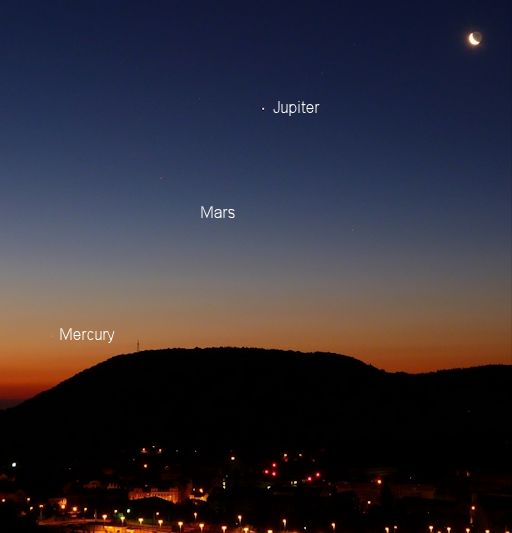Listen to radar echoes from satellites and meteors, live on listener-supported Space Weather Radio. | | |
HUBBLE SEES THE FIREBALL FROM A 'KILONOVA': NASA's Hubble Space Telescope has detected a new kind of stellar blast called a kilonova, which happens when neutron stars crash together. The observation solves a longstanding mystery of gamma-ray bursts. Get the full story form Science@NASA.
SPACE WEATHER FACT CHECK: Many readers are asking about a report in the Washington Examiner, which states that a Carrington-class solar storm narrowly missed Earth two weeks ago. There was no Carrington-class solar storm two weeks ago. On the contrary, solar activity was low throughout the month of July. The report is erroneous. The possibility of such a storm is, however, worth thinking about: A modern Carrington event would cause significant damage to our high-tech society. Solar flare alerts: text, voice.
PERSEID FIREBALLS: New research by NASA's Meteoroid Environment Office shows that among all annual meteor showers the Perseids are the #1 source of fireballs. The first Perseid fireballs of 2013 are arriving now. Earth is entering a stream of debris from parent comet 109P/Swift-Tuttle, and meteoroids are hitting the top of the atmosphere at 135,000 mph. Petr Horálek photographed this Perseid streaking along the backbone of the Milky Way over Úpice, Czech republic, on August 3rd:

"This was my first Perseid of the season," he says. "During the 35 minutes I watched, I saw 4 more. Can't wait for the maximum..."
The maximum is coming. Meteor rates should remain low for the next week as Earth penetrates the sparse outskirts of the debris stream, then skyrocket to ~100 meteors per hour as the calendar turns to the second week of August. Forecasters expect maximum Perseid activity on the nights of August 12-13. [meteor radar] [NASA: Perseid fireballs].
Realtime Meteor Photo Gallery
MORNING PLANETS: If you wake up before sunrise this weekend, look east. Three planets are preceding the sun into the dawn sky: Jupiter, Mars, and Mercury. Heiko Ulbricht sends this Saturday morning snapshot from Freital, Saxony, Germany:

"The planets and the crescent Moon were a wonderful sight this morning," says Ulbricht. "It's going to be a fantastic sky show in the mornings ahead as the Moon glides past the planets one after another."
On Sunday morning, August 4, the narrowing crescent will appear to the right of Mars. On Monday morning, August 5, the Moon will pass Mercury in deep-red twilight. Binoculars might be required for the Mercury passage. Warning: Do not point the optics at the rising sun. Set your alarm for dawn and enjoy the show!
Realtime Space Weather Photo Gallery
Realtime Aurora Photo Gallery
Realtime Noctilucent Cloud Photo Gallery
[previous years: 2003, 2004, 2005, 2006, 2007, 2008, 2009, 2011]
Realtime Comet Photo Gallery

